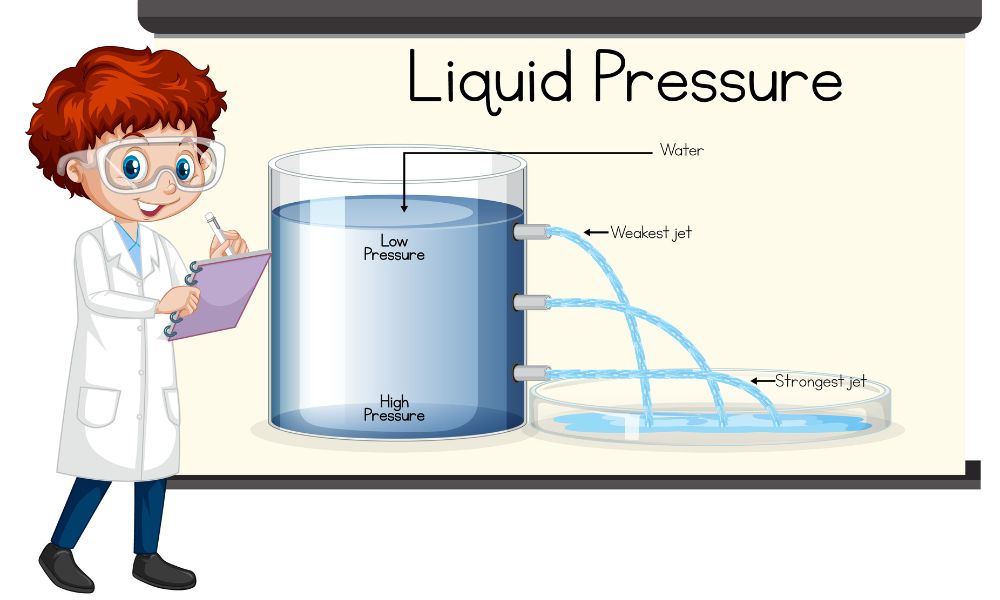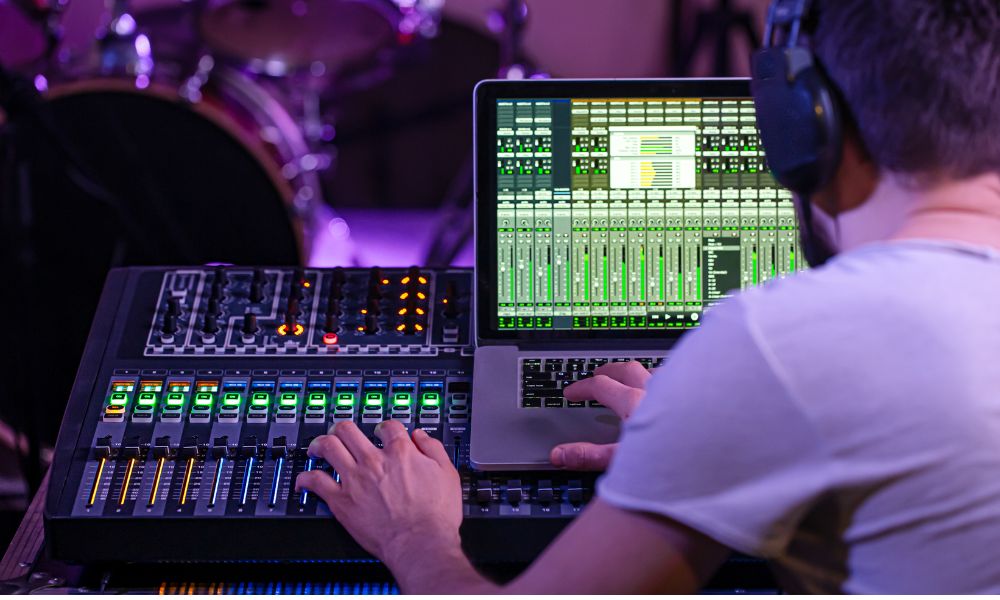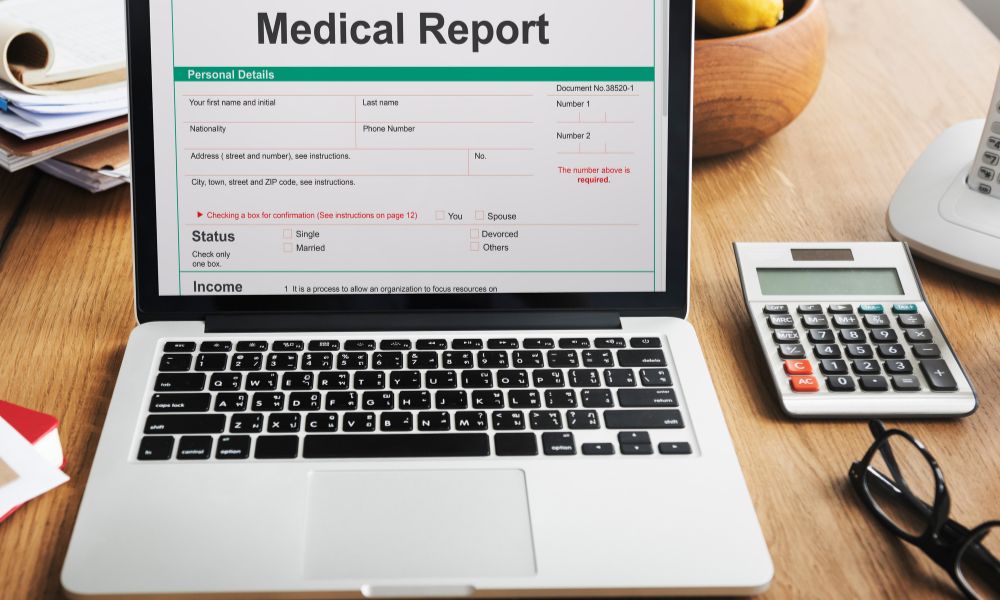Introduction:
Hey there, fellow sound enthusiasts. If you’re just starting out or an experienced sound engineer, the art of live sound engineering holds incredible power in shaping the way we experience music. The ability to capture the energy and emotion of a live performance and translate it into a cohesive and captivating mix is no small feat. That’s why I’m excited to share with you that this blog post is your go-to resource, filled with invaluable tips and techniques for live sound engineers. You can also visit our website for more details about mixing sound effects at Rian/Hunter Production.
In the dynamic world of live sound, where every show is unique and presents its own challenges, having a solid foundation of knowledge and skills is a must. Whether you’re working in a small club, a concert hall, or a festival stage, the principles of great live sound remain the same. It’s all about achieving a balance that allows every instrument and vocal to shine, creating a memorable experience for both the performers and the audience.
Throughout this blog post, we’ll give an overview of live sound engineering and explore the crucial role of equipment selection, from microphones to mixing consoles and speaker systems. We’ll uncover the secrets behind mastering sound mixing techniques, such as gain staging, balancing the sound, and creating a rich stereo image. We’ll also touch on EQ and dynamics processing, learning how to sculpt the sonic landscape to perfection. And of course, we’ll shed some light on how to add depth and dimension to your live mixes.
Essential Equipment for Live Sound Engineering
When it comes to live sound engineering, having the right equipment is crucial for achieving stellar results. Let’s dive into the essential gear you need to set yourself up for success.
Tip 1: Choosing the Right Microphones
Microphones are the backbone of capturing sound in a live performance. But with so many options out there, it can be overwhelming to find the right ones for your specific needs. Here are some key considerations:
– Types of microphones: Dynamic, condenser, or ribbon? Each microphone type has its strengths and weaknesses, so understanding their characteristics will help you make the right choice.
– Application suitability: Different microphones excel in different situations. For vocals, instruments, or drums, select microphones that are specifically designed for those applications.
Tip 2: Selecting the Ideal Mixing Console
The mixing console is the control center of your live sound setup. It’s where you shape and blend all the audio elements. Here’s what you need to keep in mind:
– Features and functions: Mixing sound effects consoles come with various features, such as EQ controls, effects sends, and routing options. Determine what features are essential for your mixing needs.
– Compatibility with your setup: Ensure that the mixing console is compatible with your microphones, speakers, and other gear. Check the number of available inputs and outputs to accommodate your requirements.
Tip 3: Quality Speaker Systems
Speakers play a vital role in delivering your meticulously crafted mix to the audience. To make an impact, consider the following:
– Venue considerations: The size and acoustics of the venue will dictate the type and power requirements of your speakers. Larger venues may require line arrays, while smaller venues may benefit from point source speakers.
– Sound reproduction quality: Look for speakers that offer accurate and balanced sound reproduction across different frequencies. Pay attention to factors like frequency response, dispersion pattern, and power handling.
By carefully selecting the right microphones, mixing console, and speaker systems, you’ll be equipped with the essential tools to achieve exceptional live sound. Your gear should align with your specific needs and the demands of the venues you’ll be working in.
Take some time to evaluate your current equipment setup. Consider if any upgrades or additions are necessary to enhance your live sound capabilities. Research and explore different options that align with your budget and requirements. With the right equipment in your arsenal, you’ll be ready to tackle any live sound challenge that comes your way.
Mastering Sound Mixing Techniques
Now that you have the essential equipment in place, let’s talk about some fundamental sound mixing techniques that will help you achieve a polished and professional live sound mix.
Tip 4: Gain Staging and Signal Flow
Proper gain staging and understanding of signal flow can help you achieve optimal audio quality and help mixing sound effects. Follow these tips to get it right:
– Gain staging: Maintain a healthy signal-to-noise ratio by setting appropriate gain levels at each stage of the audio chain. Avoid excessive gain boosts that can introduce unwanted noise or distortion.
– Signal flow: Understand the path of the audio signal from input to output. Ensure that it flows smoothly through each component, including microphones, mixing console, and effects processors, with minimal impedance or level issues.
Tip 5: Balancing the Sound
Achieving a balanced mix is the key to creating a cohesive and enjoyable sonic experience. Consider the following techniques:
– EQ and volume balancing: Use equalization to shape the tonal characteristics of each instrument and vocal, carving out space in the frequency spectrum. Adjust volume levels to ensure that no element dominates the mix, achieving a harmonious blend.
– Avoid frequency masking: Be mindful of conflicting frequencies between different instruments or vocals. Use EQ cuts or adjustments to prevent one element from overpowering or masking another.
Tip 6: Panning and Stereo Imaging
Creating a sense of space and width in your live sound mix can enhance the overall listening experience. Here’s how you can achieve it:
– Panning: Place instruments and vocals in the stereo field by panning them left, right, or center. Experiment with different panning positions to create a sense of depth and separation.
– Stereo imaging: Utilize stereo effects, such as reverb or delay, to add spatial cues and create a three-dimensional soundstage. Apply these effects in moderation to avoid overwhelming the mix.
Mastering these sound mixing techniques will help you achieve a well-balanced and immersive live sound mix. Remember, practice and experimentation will help you develop your skills and find your unique mixing style.
Set aside dedicated time to practice gain staging, signal flow, and balancing techniques. Experiment with different panning positions and stereo-imaging effects to familiarize yourself with their impact on the overall mixing sound effects. With regular practice, you’ll gain confidence in your ability to create captivating live sound experiences.
Managing EQ and Dynamics
When mixing live sound, understanding and effectively managing EQ (equalization) and dynamics processing are essential skills. These tools allow you to shape the tonal characteristics and control the dynamics of your live sound mix.
Tip 7: Equalization (EQ) Techniques
EQ is a powerful tool that helps you sculpt the frequency response of individual instruments and vocals, ensuring clarity and balance in your mix. Consider the following tips:
– Identify and address problematic frequencies: Use a parametric EQ to identify and cut frequencies that cause muddiness, harshness, or feedback issues. Boosting or reducing specific frequencies can bring out the desired characteristics of each sound source.
– Create space for each element: Utilize EQ to carve out frequency ranges for different instruments and vocals, ensuring they occupy distinct sonic spaces and don’t compete with each other.
Tip 8: Dynamics Processing
Dynamics processing involves techniques like compression, limiting, and gating, which allow you to control the volume and dynamics of individual tracks. Here’s how to make the most of dynamics processing:
– Compression: Use compression to control the dynamic range of instruments and vocals, reducing the volume of louder sections and boosting softer parts. This helps to create a more consistent and polished mix.
– Limiting: Apply limiting to prevent audio signals from exceeding a certain threshold, ensuring that peaks are controlled and the mix remains within a desired volume range.
– Gating: Employ gating to reduce unwanted background noise or bleed from microphones by setting a threshold below which the audio signal is attenuated.
By mastering EQ and dynamics processing techniques, you’ll be able to shape the tonal qualities and dynamics of individual elements within your live sound mix, resulting in a more cohesive and professional-sounding production. Take the time to experiment with different EQ settings on individual tracks, focusing on addressing frequency issues and creating clarity. Practice using compression, limiting, and gating to control the dynamics of your mix. As you become more comfortable with these techniques, you’ll be able to sculpt your live sound mixes with precision and finesse.
Harnessing the Power of Effects
Effects play a big role in enhancing the depth, dimension, and overall ambience of your live sound mix. When used tastefully, they can transform a performance into a truly immersive sonic experience. Let’s explore the creative use of effects and how they can take your live sound mixes to the next level.
Tip 9: Understanding Effects Processors
Effects processors offer a wide range of sonic possibilities. Here are a few common effects and their applications:
– Reverb: Reverb adds a sense of space and natural ambience to instruments and vocals. Experiment with different reverb types and adjust parameters like decay time and pre-delay to achieve the desired effect.
– Delay: Delay creates echoes or repetitions of sound, adding depth and texture. Use delay to create rhythmic patterns, simulate reflections, or add a sense of space to vocals and instruments.
– Chorus: Chorus imparts a shimmering, swirling quality to sound. It can be used to thicken vocals, guitars, or keyboards, providing a lush and vibrant texture to your mix.
Tip 10: Using Effects in Moderation
While effects can elevate your mix, it’s important to exercise restraint and use them judiciously. Here are some considerations:
– Enhance, don’t overpower: Effects should enhance the natural qualities of the source without overpowering it. Strive for a subtle and tasteful application that complements the musical performance.
– Maintain clarity: Be mindful of how effects may impact the clarity of the mix. Too much reverb or delay can blur the individual elements and make the mix sound muddy.
By understanding the capabilities of effects processors and using them in moderation, you can add depth, dimension, and ambiance to your live sound mixes, creating a captivating sonic experience for your audience.
Troubleshooting and Problem-Solving
Even with the best equipment and techniques, live sound engineering can present its fair share of challenges. It’s important to be prepared to troubleshoot and problem-solve on the fly. In this section, we’ll discuss common issues that arise during live sound setups and performances, and provide strategies to overcome them.
Tip 11: Feedback Prevention and Management
Feedback is a common issue that can quickly derail a live performance. Here’s how to prevent and manage feedback:
– Proper microphone placement: Position microphones carefully to minimize the chance of feedback. Avoid pointing microphones directly at speakers and monitor systems.
– Monitor placement and EQ: Set up monitor speakers strategically, considering their proximity to microphones. Use appropriate EQ adjustments to reduce frequencies prone to feedback.
– Soundcheck and system tuning: Conduct thorough soundchecks before performances to identify and address potential feedback issues. Make necessary adjustments to system EQ and monitor levels.
Tip 12: Dealing with Common Sound Issues
Live sound setups can encounter various technical issues. Here are strategies to troubleshoot and resolve common sound problems:
– Phase cancellation: Check for phase cancellation caused by improper microphone or speaker wiring. Ensure that all connections are secure and wires are properly balanced.
– Ground loops and electrical interference: Address ground loop issues by using ground lifters or isolators. Separate audio cables from power cables to minimize electrical interference.
– Equipment malfunctions: Have backup equipment available and perform regular maintenance to minimize the risk of unexpected failures. Familiarize yourself with troubleshooting techniques for your gear.
Being prepared to troubleshoot and solve common live sound issues is essential for a smooth and successful performance. By understanding the underlying causes and employing appropriate strategies, you can overcome challenges and deliver a high-quality sound experience.
Develop a checklist for troubleshooting common live sound issues. Familiarize yourself with techniques for preventing and managing feedback. Practice diagnosing and resolving technical problems to gain confidence in your ability to troubleshoot on the spot. By being prepared, you’ll ensure that your live sound setups and performances go off without a hitch.
Conclusion
Congratulations, you’ve made it through our comprehensive guide to live sound tips and techniques. We hope that the knowledge and strategies shared in this blog post have provided you with valuable insights and practical approaches to elevate your live sound mixing skills. As you continue on your journey as a live sound engineer, remember that mastering the art of live sound is an ongoing process of learning and refinement.
Let’s recap the key tips and techniques we’ve covered:
- Choose the Right Equipment: Invest in quality microphones, mixing consoles, and speaker systems that align with your specific needs.
- Master Mixing Sound Effects Techniques: Pay attention to gain staging, signal flow, balancing the sound, and creating a rich stereo image for a well-rounded mix.
- Manage EQ and Dynamics: Utilize EQ to shape frequencies and dynamics processing to control volume levels and dynamics in your mix.
- Harness the Power of Effects: Understand the various effects processors and use effects in moderation to add depth and dimension to your live sound mixes.
- Troubleshooting and Problem-Solving: Be prepared to prevent and manage feedback, troubleshoot common sound issues, and overcome technical challenges.
Now it’s time to put these tips and techniques into action. Take the knowledge you’ve gained and apply it to your future live sound setups and performances. Embrace experimentation, as finding your own unique style and approach is part of the journey.
Keep rocking those live sound mixes.







